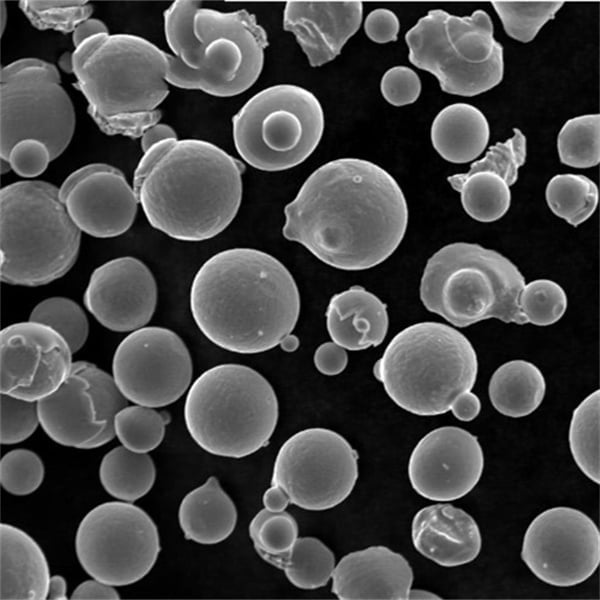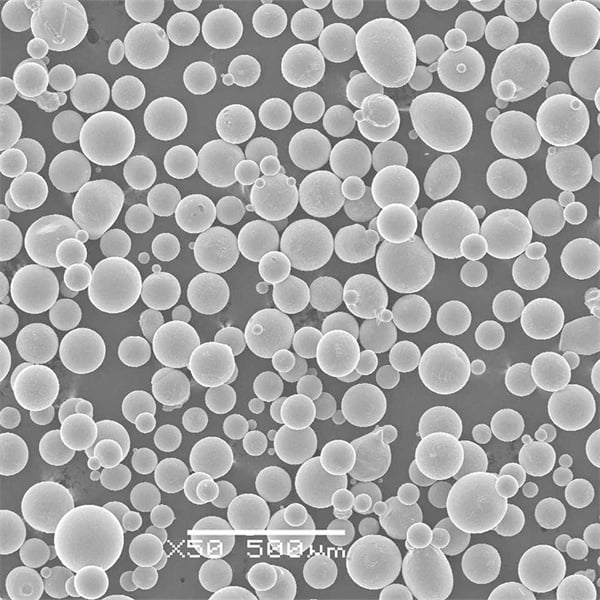Lazer Tabanlı Toz Yatağı Füzyonu
İçindekiler
Lazer Tabanlı Toz Yatağı Füzyonu (PBF) benzeri görülmemiş bir hassasiyet, verimlilik ve esneklik sunarak imalat sektöründe devrim yaratıyor. Peki ama tam olarak nedir ve neden önemsemelisiniz? Gelin bu yenilikçi teknolojinin derinliklerine inelim, inceliklerini, uygulamalarını ve neden üretim dünyasında oyunun kurallarını değiştiren bir unsur haline geldiğini keşfedelim.
Lazer Tabanlı Toz Yatağı Füzyonuna Genel Bakış
Lazer Tabanlı Toz Yatağı Füzyonu, katı, üç boyutlu bir nesne oluşturmak üzere metal toz parçacıklarını katman katman kaynaştırmak için yüksek güçlü bir lazer kullanan bir eklemeli üretim sürecidir. Bu, 3D baskı şemsiyesi altında yer alan ancak yüksek kaliteli metal bileşenler üretmek için özel olarak tasarlanmış bir tekniktir.
Lazer Tabanlı Toz Yatağı Füzyonunun Temel Özellikleri:
- Hassas: Karmaşık detayları ve karmaşık geometrileri yüksek doğrulukla elde eder.
- Malzeme Verimliliği: Sadece gerekli miktarda toz kullanarak israfı en aza indirir.
- Özelleştirme: Özel ihtiyaçlara göre ısmarlama parçaların oluşturulmasına olanak sağlar.

Metal Tozu Çeşitleri Lazer Tabanlı Toz Yatağı Füzyonu
Doğru metal tozunun seçilmesi PBF sürecinin başarısı için çok önemlidir. İşte PBF'de kullanılan bazı popüler metal tozlarının açıklamalarıyla birlikte bir özeti:
| Metal Tozu | Açıklama |
|---|---|
| Titanyum Ti-6Al-4V | Yüksek mukavemet-ağırlık oranı, mükemmel korozyon direnci ve biyouyumluluğu ile bilinen bu ürün, havacılık, tıbbi implantlar ve otomotiv endüstrileri için idealdir. |
| Alüminyum AlSi10Mg | Hafiflik özelliklerini iyi mekanik mukavemet ve termal iletkenlikle birleştirir, otomotiv ve havacılık bileşenleri için mükemmeldir. |
| Paslanmaz Çelik 316L | Medikal, denizcilik ve kimyasal işleme uygulamalarında yaygın olarak kullanılan mükemmel korozyon direnci, mukavemet ve süneklik sunar. |
| Inconel 718 | Havacılık, gaz türbinleri ve nükleer reaktörlerde kullanılan, yüksek sıcaklık direncine ve iyi gerilme mukavemetine sahip bir nikel-krom süperalaşım. |
| Kobalt-Krom | Diş ve ortopedik implantların yanı sıra havacılık ve uzay uygulamalarında yaygın olarak kullanılan yüksek aşınma direnci, biyouyumluluk ve mukavemet. |
| Maraging Çelik (1.2709) | Isıl işlemden sonra mükemmel mukavemeti ve tokluğu ile bilinir, takım, havacılık ve yüksek gerilimli bileşenlerde kullanılır. |
| Bakır (Cu) | Olağanüstü termal ve elektriksel iletkenlik, elektrikli bileşenler ve ısı eşanjörleri için uygundur. |
| Nikel Alaşımlı (625) | Mükemmel korozyon ve oksidasyon direnci, yüksek mukavemet sunar, denizcilik, kimya ve havacılık endüstrilerinde kullanılır. |
| Takım Çeliği (H13) | Sertliği, mukavemeti ve aşınmaya karşı direnci ile bilinir, genellikle kalıp yapımında, basınçlı dökümde ve takım uygulamalarında kullanılır. |
| Titanyum (Ti-5Al-2.5Sn) | İyi yüksek sıcaklık performansı ve sürünme direnci, havacılık ve yüksek performanslı otomotiv uygulamalarında kullanılır. |
Metal Tozlarının Özellikleri ve Karakteristikleri
| Metal Tozu | Kompozisyon | Özellikler | Uygulamalar |
|---|---|---|---|
| Titanyum Ti-6Al-4V | Ti, Al, V | Yüksek mukavemet/ağırlık oranı, korozyon direnci, biyouyumluluk | Havacılık ve uzay, tıbbi implantlar, otomotiv |
| Alüminyum AlSi10Mg | Al, Si, Mg | Hafif, iyi mekanik dayanım, termal iletkenlik | Otomotiv, havacılık ve uzay |
| Paslanmaz Çelik 316L | Fe, Cr, Ni, Mo | Korozyon direnci, mukavemet, süneklik | Tıbbi, denizcilik, kimyasal işleme |
| Inconel 718 | Ni, Cr, Fe, Nb, Mo, Ti | Yüksek sıcaklık direnci, çekme dayanımı | Havacılık ve uzay, gaz türbinleri, nükleer reaktörler |
| Kobalt-Krom | Co, Cr, Mo | Aşınma direnci, biyouyumluluk, mukavemet | Diş, ortopedik implantlar, havacılık ve uzay |
| Maraging Çelik (1.2709) | Fe, Ni, Co, Mo | Isıl işlem sonrası mukavemet, tokluk | Takım, havacılık ve uzay, yüksek gerilimli bileşenler |
| Bakır (Cu) | Cu | Termal ve elektriksel iletkenlik | Elektrikli bileşenler, ısı eşanjörleri |
| Nikel Alaşımlı (625) | Ni, Cr, Mo, Nb | Korozyon ve oksidasyon direnci, yüksek mukavemet | Denizcilik, kimya, havacılık ve uzay |
| Takım Çeliği (H13) | Fe, Cr, Mo, Si, V | Sertlik, mukavemet, aşınma direnci | Kalıp yapımı, basınçlı döküm, kalıplama |
| Titanyum (Ti-5Al-2.5Sn) | Ti, Al, Sn | Yüksek sıcaklık performansı, sürünme direnci | Havacılık ve uzay, yüksek performanslı otomotiv |
Lazer Tabanlı Toz Yatağı Füzyonu Uygulamaları
Lazer Tabanlı PBF, çok yönlülüğü ve hassasiyeti sayesinde çeşitli sektörlerde ses getiriyor. İşte nerede uygulandığına ve neden bu kadar etkili olduğuna bir göz atın:
| Endüstri | Uygulamalar |
|---|---|
| Havacılık ve Uzay | Motor bileşenleri, yapısal parçalar, hafif braketler |
| Tıbbi | Özel implantlar, protezler, cerrahi aletler |
| Otomotiv | Hafif bileşenler, özel parçalar, performans geliştirmeleri |
| Aletler | Enjeksiyon kalıpları, basınçlı döküm kalıpları, özel takımlar |
| Takı | Özel tasarımlar, karmaşık desenler, hızlı prototipleme |
| Enerji | Türbin kanatları, ısı eşanjörleri, yakıt nozulları |
| Elektronik | Isı alıcıları, elektrikli bileşenler, özel muhafazalar |
| Dental | Kronlar, köprüler, diş implantları |
| Denizcilik | Korozyona dayanıklı parçalar, hafif bileşenler |
| Mimarlık | Özel fikstürler, tasarım prototipleri |
Avantajları Lazer Tabanlı Toz Yatağı Füzyonu
Lazer Tabanlı Toz Yatağı Füzyonu neden bu kadar ilgi görüyor? İşte bazı ikna edici nedenler:
- Hassasiyet ve Detay: Geleneksel üretim yöntemleri için zorlayıcı olan girift ve karmaşık geometrileri üretebilir.
- Malzeme Verimliliği: Sadece gerekli miktarda metal tozu kullanarak atıkları en aza indirir.
- Özelleştirme: Özel gereksinimlere göre uyarlanmış ısmarlama parçaları kolayca oluşturun.
- Hız ve Verimlilik: Geleneksel yöntemlere kıyasla daha hızlı üretim süreleri.
- Güç ve Dayanıklılık: Mükemmel mekanik özelliklere sahip parçalar üretir.
Lazer Tabanlı Toz Yatağı Füzyonunun Dezavantajları
Birçok faydasına rağmen Lazer Tabanlı PBF'nin bazı sınırlamaları da vardır:
- Maliyet: Ekipman ve malzemeler için yüksek ilk yatırım.
- Karmaşıklık: Etkin bir şekilde çalışmak için özel bilgi ve beceriler gerektirir.
- Boyut Sınırlamaları: Yapı haznesi boyutu nedeniyle genellikle daha küçük parçalarla sınırlıdır.
- Yüzey İşlemi: İstenen yüzey kalitesini elde etmek için işlem sonrası gerekebilir.
Spesifikasyonlar, Boyutlar, Kaliteler ve Standartlar
| Metal Tozu | Teknik Özellikler | Boyutlar | Notlar | Standartlar |
|---|---|---|---|---|
| Titanyum Ti-6Al-4V | ASTM B348, ASTM F1472 | 15-45 µm, 45-106 µm | 5. Sınıf | ISO 5832-3, AMS 4928 |
| Alüminyum AlSi10Mg | EN AC-43400 | 20-63 µm, 45-90 µm | ||
| Paslanmaz Çelik 316L | ASTM A276, ASTM F138 | 15-45 µm, 45-106 µm | ISO 5832-1 | |
| Inconel 718 | AMS 5662, ASTM B637 | 15-45 µm, 45-106 µm | ||
| Kobalt-Krom | ASTM F75, ASTM F1537 | 15-45 µm, 45-106 µm | ||
| Maraging Çelik (1.2709) | DIN 1.2709, AMS 6514 | 15-45 µm, 45-106 µm | ||
| Bakır (Cu) | ASTM B170 | 20-63 µm, 45-90 µm | ||
| Nikel Alaşımlı (625) | AMS 5666, ASTM B443 | 15-45 µm, 45-106 µm | ||
| Takım Çeliği (H13) | ASTM A681 | 15-45 µm, 45-106 µm | ||
| Titanyum (Ti-5Al-2.5Sn) | ASTM B348 | 15-45 µm, 45-106 µm |
Tedarikçiler ve Fiyatlandırma Detayları
| Tedarikçi | Metal Tozları Mevcuttur | Fiyatlandırma (kg başına) | Konum |
|---|---|---|---|
| Marangoz Teknolojisi | Titanyum, Alüminyum, Paslanmaz Çelik, Inconel, Kobalt-Krom | $200 – $600 | ABD |
| Sandvik | Titanyum, Alüminyum, Paslanmaz Çelik, Inconel, Kobalt-Krom | $250 – $700 | İsveç |
| GKN Katkı Maddesi | Titanyum, Alüminyum, Paslanmaz Çelik, Inconel, Kobalt-Krom | $220 – $650 | Almanya |
| LPW Teknoloji | Titanyum, Alüminyum, Paslanmaz Çelik, Inconel, Kobalt-Krom | $230 – $680 | BIRLEŞIK KRALLIK |
| Höganäs | Titanyum, Alüminyum, Paslanmaz Çelik, Inconel, Kobalt-Krom | $240 – $690 | İsveç |
| AP&C | Titanyum, Alüminyum, Paslanmaz Çelik, Inconel, Kobalt-Krom | $210 – $620 | Kanada |
| Aubert & Duval | Titanyum, Alüminyum, Paslanmaz Çelik, Inconel, Kobalt-Krom | $220 – $640 | Fransa |
| Praxair Yüzey Teknolojileri | Titanyum, Alüminyum, Paslanmaz Çelik, Inconel, Kobalt-Krom | $230 – $660 | ABD |
| Gelişmiş Tozlar ve Kaplamalar (AP&C) | Titanyum, Alüminyum, Paslanmaz Çelik, Inconel, Kobalt-Krom | $220 – $650 | Kanada |
| Renishaw | Titanyum, Alüminyum, Paslanmaz Çelik, Inconel, Kobalt-Krom | $230 – $670 | BIRLEŞIK KRALLIK |

Artıları ve Eksilerinin Karşılaştırılması Lazer Tabanlı Toz Yatağı Füzyonu
| Aspect | Avantajlar | Sınırlamalar |
|---|---|---|
| Hassasiyet ve Detay | Yüksek doğruluk ve karmaşık geometriler üretme yeteneği | Yüzey kalitesi için sonradan işlem gerektirebilir |
| Malzeme Verimliliği | Minimum atık, sadece gerekli miktarda toz kullanılır | Metal tozlarının yüksek maliyeti |
| Özelleştirme | Özel ihtiyaçlara göre ısmarlama parçaları kolayca oluşturun | Tasarım ve işletimde karmaşıklık |
| Hız ve Verimlilik | Geleneksel yöntemlere kıyasla daha hızlı üretim süreleri | İlk kurulum süresi ve kalibrasyon |
| Güç ve Dayanıklılık | Mükemmel mekanik özelliklere sahip parçalar üretir | Yapı odası kısıtlamaları nedeniyle boyut sınırlamaları |
| Maliyet | Malzeme ve üretim verimliliğinde uzun vadeli maliyet tasarrufu | Ekipman ve malzemeler için yüksek ilk yatırım |
SSS
Lazer Tabanlı Toz Yatak Füzyonu Nedir?
Lazer Tabanlı Toz Yatak Füzyonu (PBF), katı, üç boyutlu bir nesne oluşturmak üzere metal toz partiküllerini katman katman kaynaştırmak için yüksek güçlü bir lazer kullanan bir eklemeli üretim sürecidir.
PBF'de ne tür metal tozları kullanılabilir?
Titanyum Ti-6Al-4V, Alüminyum AlSi10Mg, Paslanmaz Çelik 316L, Inconel 718, Kobalt-Krom, Maraging Çelik, Bakır, Nikel Alaşım 625, Takım Çeliği H13 ve Titanyum Ti-5Al-2.5Sn gibi çeşitli metal tozları kullanılabilir.
Lazer Tabanlı Toz Yatak Füzyonunun avantajları nelerdir?
Avantajları arasında yüksek hassasiyet ve detay, malzeme verimliliği, özelleştirme, hız ve verimlilik ile mükemmel mekanik özelliklere sahip parçaların üretimi yer almaktadır.
Lazer Tabanlı Toz Yatağı Füzyonunun sınırlamaları nelerdir?
Sınırlamalar arasında yüksek başlangıç maliyetleri, operasyon karmaşıklığı, boyut sınırlamaları ve istenen yüzey kalitesini elde etmek için son işlem ihtiyacı yer almaktadır.
Lazer Tabanlı Toz Yatak Füzyonu hangi sektörlere fayda sağlar?
Havacılık, tıp, otomotiv, takım, mücevherat, enerji, elektronik, dişçilik, denizcilik ve mimari gibi sektörler çok yönlülüğü ve hassasiyeti nedeniyle PBF'den faydalanmaktadır.
PBF geleneksel üretim yöntemlerine kıyasla nasıldır?
PBF daha hızlı üretim süreleri, daha yüksek hassasiyet ve geleneksel yöntemler için zor olan karmaşık geometriler oluşturma yeteneği sunar. Bununla birlikte, daha yüksek başlangıç maliyetleri ve operasyonel karmaşıklık içerir.
Sonuç
Lazer Tabanlı Toz Yatağı Füzyonu, üretimin geleceğinin önünü açıyor. Minimum atıkla yüksek hassasiyetli, özelleştirilmiş parçalar üretme yeteneği, havacılıktan tıbba kadar sektörleri dönüştürüyor. Bir dizi zorlukla birlikte gelse de, avantajları sınırlamalardan çok daha ağır basıyor ve bu da onu modern üretim araç setine değerli bir katkı haline getiriyor. İster mühendis, ister tasarımcı veya üretici olun, PBF'nin gücünü anlamak ve kullanmak işinizde yeni inovasyon ve verimlilik kapıları açabilir.
Paylaş
MET3DP Technology Co, LTD, merkezi Qingdao, Çin'de bulunan lider bir katmanlı üretim çözümleri sağlayıcısıdır. Şirketimiz, endüstriyel uygulamalar için 3D baskı ekipmanları ve yüksek performanslı metal tozları konusunda uzmanlaşmıştır.
İşletmeniz için en iyi fiyatı ve özelleştirilmiş Çözümü almak için sorgulayın!
İlgili Makaleler

Yüksek Performanslı Nozul Kanat Segmentleri: Metal 3D Baskı ile Türbin Verimliliğinde Devrim
Daha Fazla Oku "Met3DP Hakkında
Son Güncelleme
Bizim Ürünümüz
BİZE ULAŞIN
Herhangi bir sorunuz var mı? Bize şimdi mesaj gönderin! Mesajınızı aldıktan sonra tüm ekibimizle talebinize hizmet edeceğiz.

3D Baskı ve Katmanlı Üretim için Metal Tozları
ÜRÜN
cONTACT BİLGİLERİ
- Qingdao Şehri, Shandong, Çin
- [email protected]
- [email protected]
- +86 19116340731
















